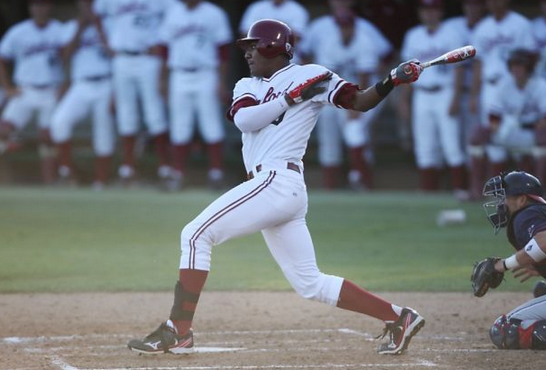 When the 48th pick came up yesterday, many people were clamoring for the Mets to take Austin Wilson. Not many people believed that Wilson, a right-handed hitting outfielder from Stanford would drop to the 48th overall pick in the draft. The Mets instead took Andrew Church, a projectable right-handed pitcher out of Basic High School in Nevada. The Mariners took Wilson with the next pick.
When the 48th pick came up yesterday, many people were clamoring for the Mets to take Austin Wilson. Not many people believed that Wilson, a right-handed hitting outfielder from Stanford would drop to the 48th overall pick in the draft. The Mets instead took Andrew Church, a projectable right-handed pitcher out of Basic High School in Nevada. The Mariners took Wilson with the next pick.
I sorted through tweets and comments, as people were pouring out anger over the Mets inability to draft the player they wanted afterwards, already knowing the answer on why they passed on a player that the fan base thought was so promising.
Wilson was easily one of the toolsiest players in the draft — featuring above-average contact, present strength for plus power, some average running, a plus arm, and above average fielding tool. This was exactly what the Mets needed in a player, yet they didn’t take him. But why?
The reason is the “Stanford Stigma.”
I’ve been preaching this for about a week, saying that scouts do not like Stanford hitters. In my Draft Mailbag last week I explained what was going on with Stanford, saying:
“The college likes to teach a more mechanical swing that is geared towards contact on a flatter plane, rather than the usual hip-rotation uppercut swing that generates power.”
This swing is taught to most players on the team, generating contact over power and scouts hate it. When Wilson was a senior in high school, most scouts felts that he was better off going to college and trying to fix his swing, but they didn’t mean Stanford. His swing wasn’t pretty when he was drafted 3 years ago, so his drafting team let him go and work on it in college. When he went to college, the coaches changed his swing to their approach. This type of swing is oriented to face college competition, but as he moves up, the pros will expose the numerous holes in it.
I asked fellow analyst Mitch Petanick how long it could take to change to a more efficient swing, and he told me, “it could maybe take a few months or maybe never” to effectively change his swing.
Mitch was also able to help provide some in-depth analysis on Wilson’s swing:
Austin Wilson is one of the toolsiest players in the 2013 MLB Draft, but there are questions about his swing and approach at the plate that make many question if he will ever live up to that potential. Austin does not get very good extension with his arms, and for a guy his size, it saps his power. It almost looks like he is trying to inside-out pitches, and it basically turns him into a 6 foot 4 inch slap hitter. It looks really awkward to see a man of his size swinging like that.
In order for Wilson to tap into his enormous potential, he is going to need a lot of work. He’s going to have to change his approach at the plate and rebuild his swing in order to tap into his power.
Based on his potential, he was a top ten pick…but for the reasons listed above, teams passed on Wilson, and he slipped into the second round. Wilson was one of the highest risk/reward players in the 2013 draft.
Summing It Up
While some Stanford players have had success in the past, it was reported that they had refused to conform to the cookie-cutter swing that the coaches had employed onto other players. Most scouts hate this mechanically awkward swing, and don’t believe that it will help hitters to be successful in the minors or majors. Even with Wilson’s tools, (excellent ones) and athleticism, he could be doomed to join the other Stanford players who have failed using this approach.














